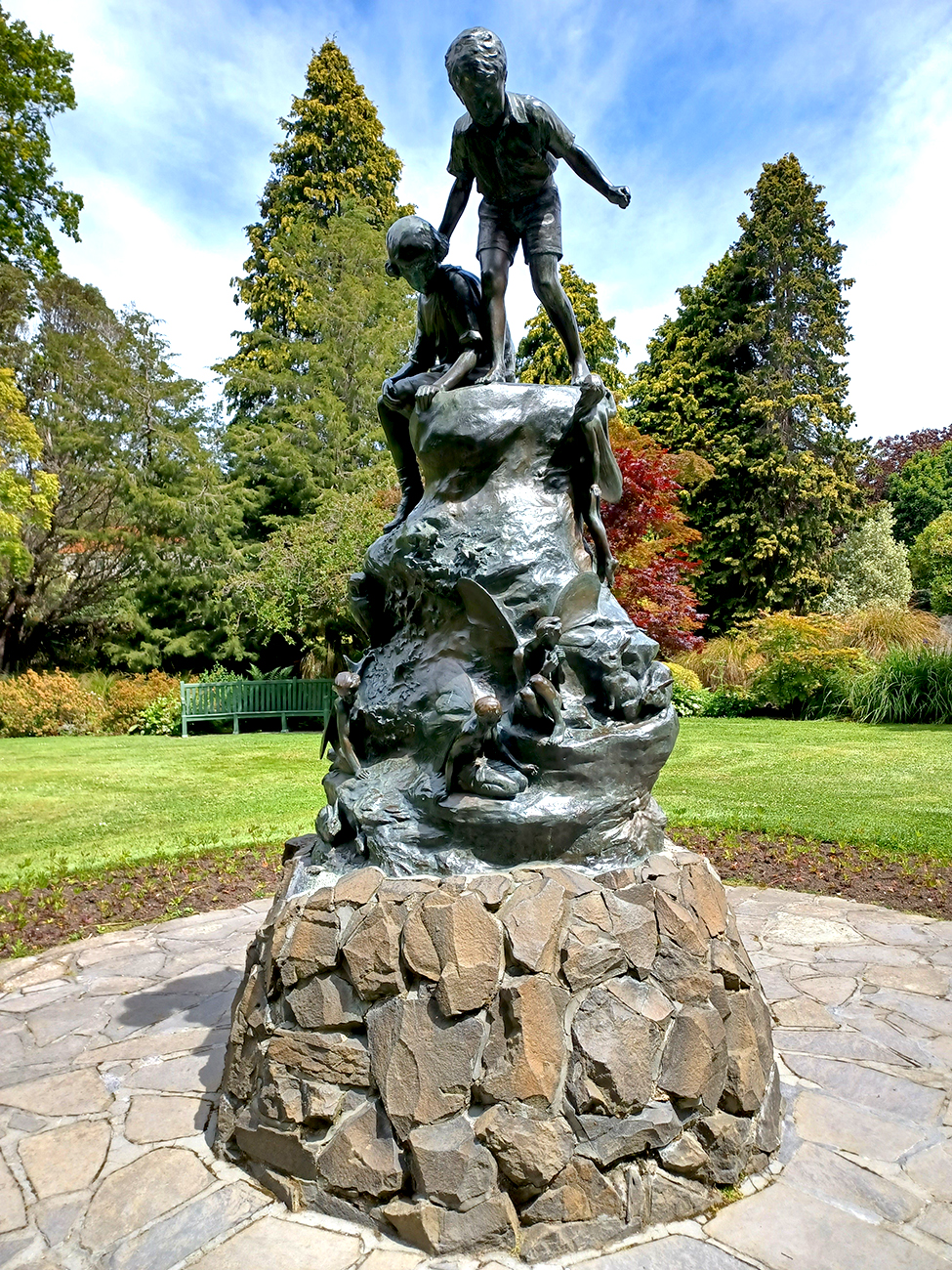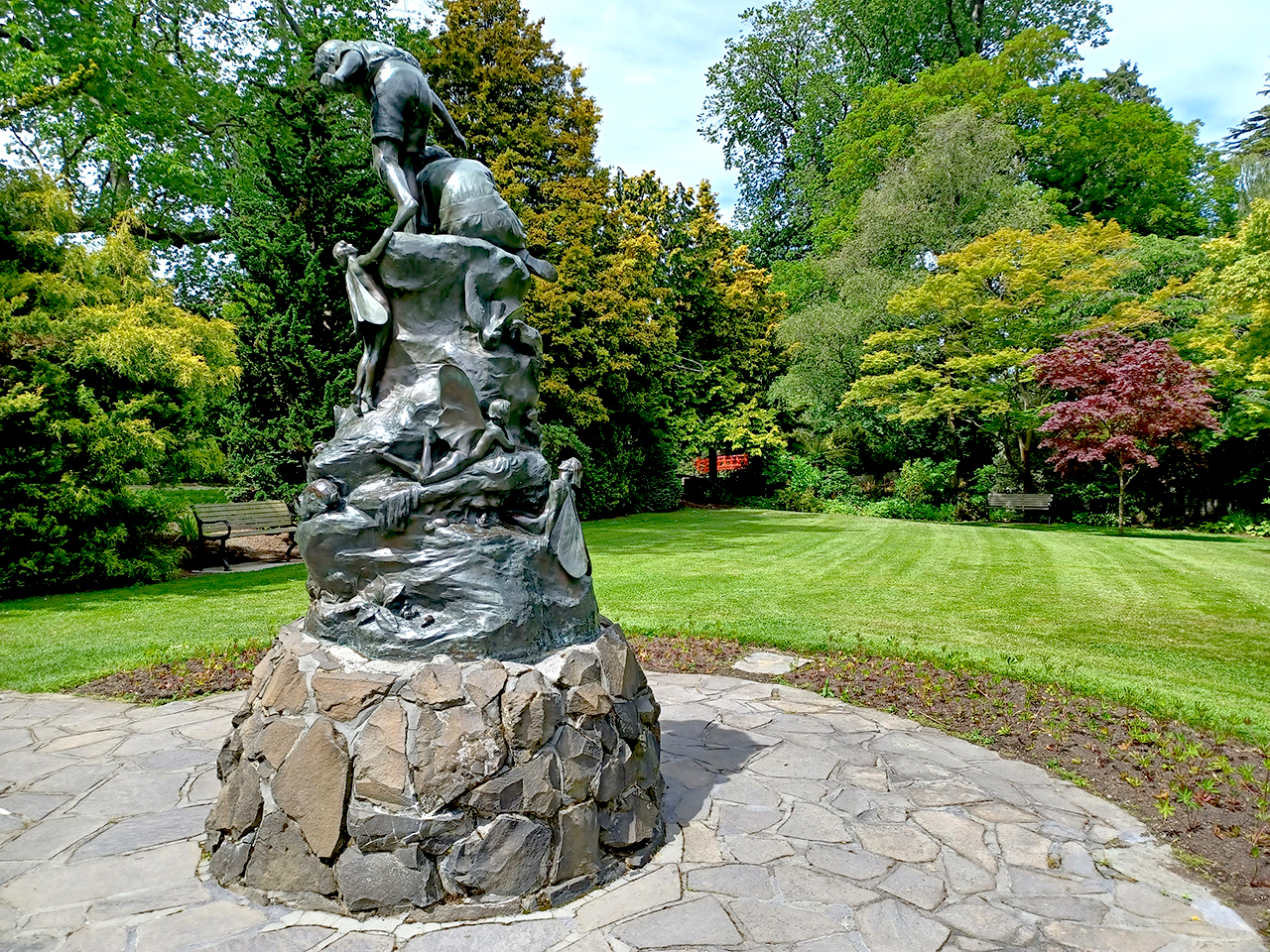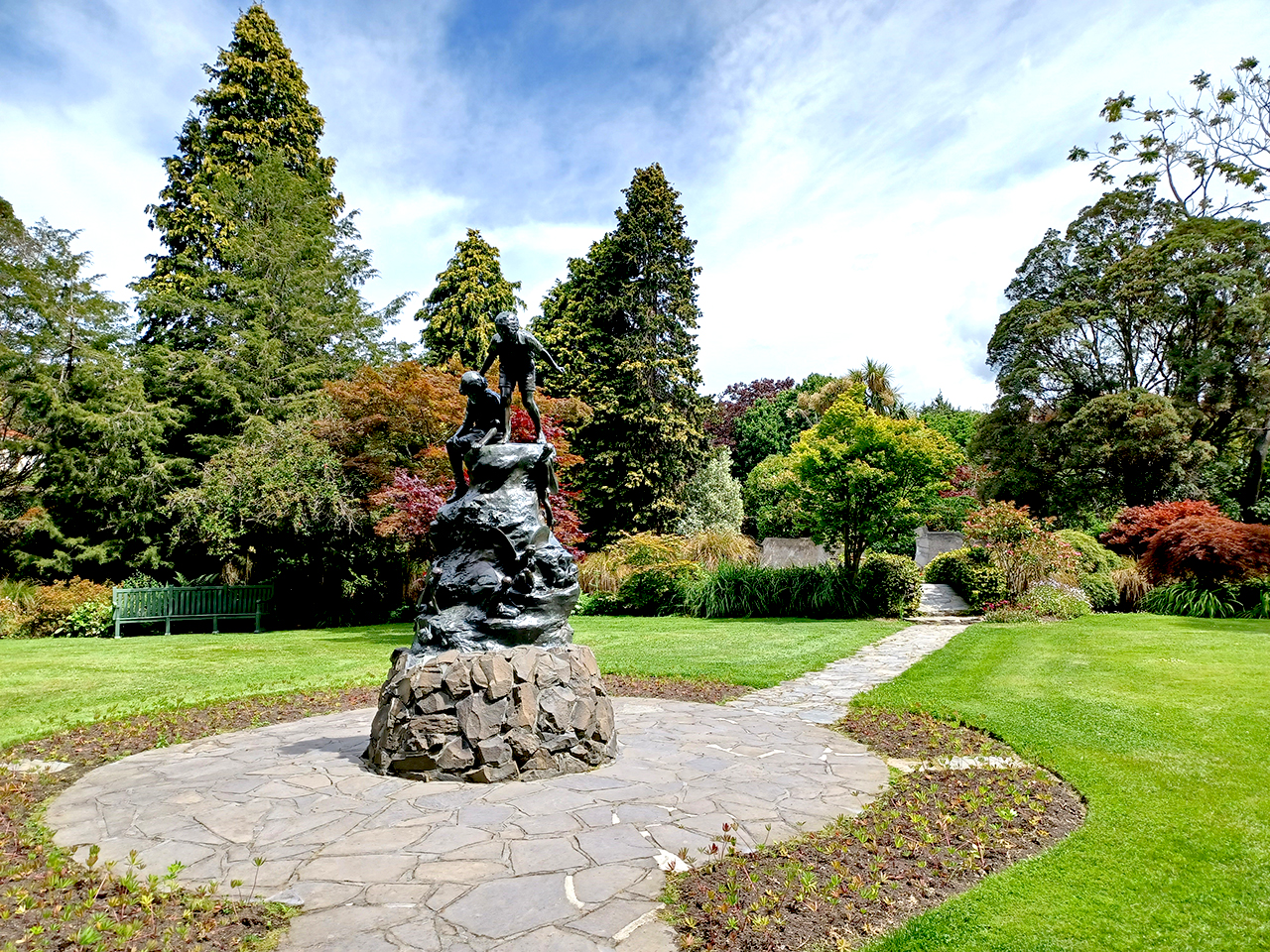Unveiled in 1927, the Wonderland Statue in the Oamaru Public Gardens, depicting a boy and a girl absorbed by the fairy land revealed to them, recalls the curiosity and imagination of childhood. Sculpted by renowned Scottish sculptor Sir Thomas Clapperton and inspired by Sir George Frampton’s 1913 Peter Pan sculpture in London’s Kensington Gardens, the statue has historic, cultural and social significance. Oamaru’s Wonderland Statue owes it allegiance to Sir George Frampton’s Peter Pan unveiled in Kensington Gardens in London in 1913. The sculptor, Sir Thomas Clapperton, was a former student of Frampton’s. Clapperton completed some prestigious commissions in England and other work in New Zealand. Clapperton’s other works include a statue of Robert the Bruce at the entrance to Edinburgh Castle, and an equestrian statue of a raider in his home town of Galasheils at the Scottish Borders. He also designed the bronze soldier for the First World War Memorial on Thames Street in Oamaru (List Entry No. 2316). The sculpture was commissioned by Robert Milligan, a former mayor of Oamaru. Milligan had seen Frampton’s Peter Pan at Kensington Gardens, and entranced by it, wanted to bring the spirit of the work to Oamaru. The sculpture was cast in bronze at the foundry of A.B. Burton in London. The marquette, or model for the sculpture, is in a private collection. Milligan’s gift inspired at least one child who had gazed and the children and stroked the bronze nose of the small animals: Harold Richmond, who had grown up in Oamaru, commissioned the Peter Pan sculptures for the Dunedin Botanic Gardens in the 1960s. In March 1927, two thousand people crowded into the gardens to witness the unveiling of ‘A Vision of Fairyland’ statue.’ The sculpture shows a boy and a girl on top of a rock entranced by the fairy world they can see below – finely detailed fairies and small animals. Although it does not depict any of the Peter Pan characters, the statue has acquired the name ‘Wonderland Statue.’ Oamaru’s statue seems to be the earliest of that genre in New Zealand, predating those at Wanganui (1967), Invercargill (1966), Dunedin (1965 and 1968) and Hawera (1951, List Entry No. 7469). Oamaru’s sculpture is also the least literal –the others depict characters from Peter Pan – and represents childhood imagination and wonder. In 1959 a special Wonderland Garden was designed by Mr H.T. Beveridge, the superintendent of the reserves department. In November 1959, the Wonderland Garden opened with the statue on a new, less rustic base.




Location
List Entry Information
Overview
Detailed List Entry
Status
Listed
List Entry Status
Historic Place Category 2
Access
Able to Visit
List Number
7149
Date Entered
2nd February 1994
Date of Effect
2nd February 1994
City/District Council
Waitaki District
Region
Otago Region
Extent of List Entry
Extent includes part of the land described as Lot 2 DP 317966 (RT 70398), Otago Land District, and the structure known as the Wonderland Statue thereon. (Refer to the extent map tabled at the Heritage List/ Rārangi Kōrero Committee meeting on 11 February 2016).
Legal description
Lot 2 DP 317966 (RT 70398), Otago Land District
Related listings
Stay up to date with Heritage this month
